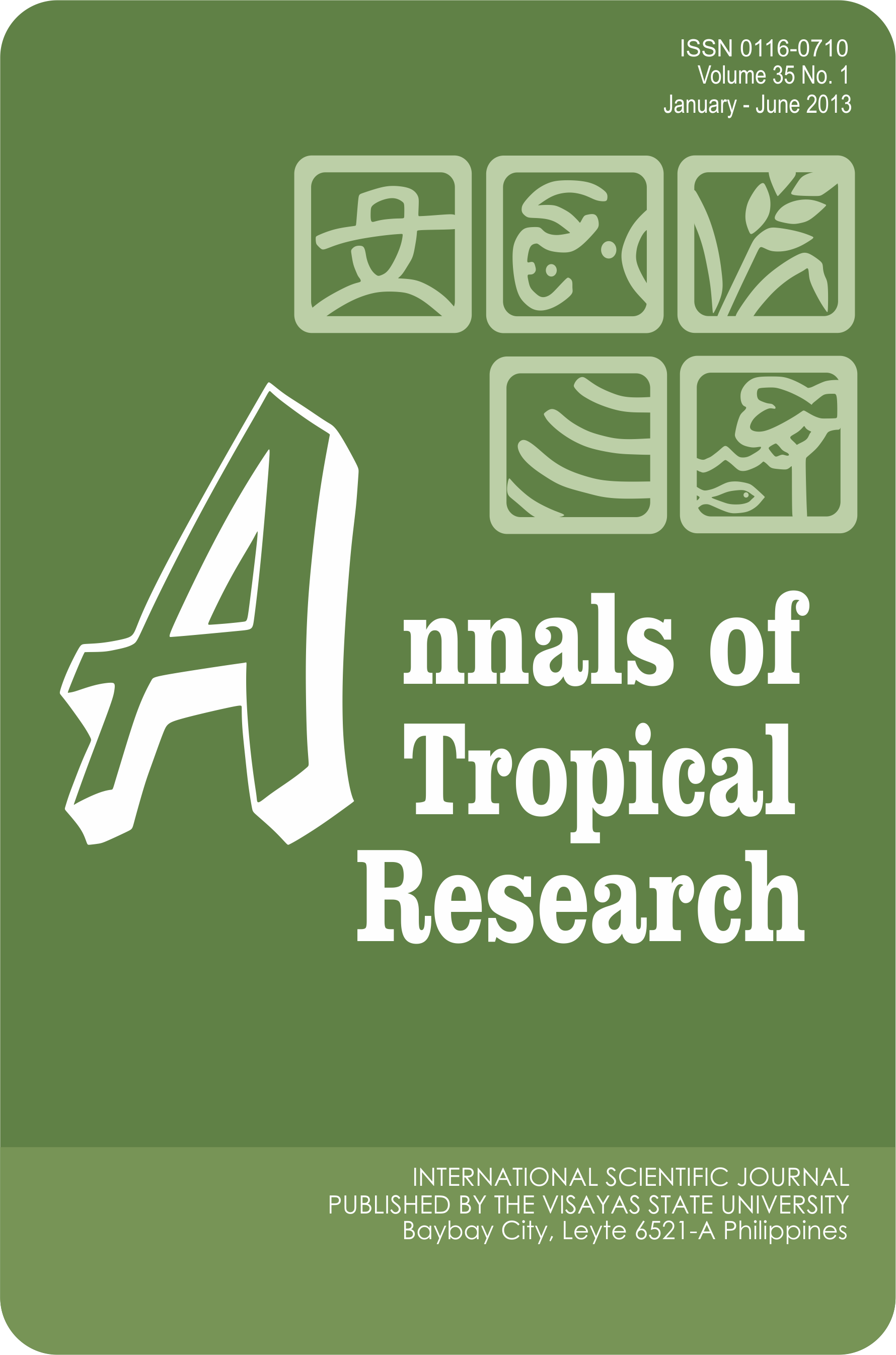General Performance and Cocoon Yields of Two Hybrids of the Silkworm, Bombyx Mori L. (Lepidoptera: Bombicidae), Fed on Mulberry Leaves from Different Amended Soils
DOI:
https://doi.org/10.32945/atr3511.2013Keywords:
Bombyx mori, NPK, manure, cocoon yield, developmental characteristicsAbstract
The performance and cocoon yields of two silkworm hybrids – W1D2 and C1J2 – grown on mulberry leaves from NPK fertilizer-, poultry manure – or non-amended soils were investigated in a 2 x 3 factorial experiment fitted into a completely randomized design with four replicates. Mulberry leaves from the three treatment plots were randomly selected for proximate analysis. Cocoon yield was significantly higher in silkworm hybrid 1 W1D2 irrespective of soil amendments, compared to hybrid 2 C1J2. Number of cocoons, single cocoon weight and shell weight were significantly higher from amended soils compared with the control. Larval and pupal weights were not influenced significantly by silkworm hybrid, soil amendments or their interaction. Fecundity was significantly higher in silkworm fed with leaves amended with NPK compared to leaves from soil amended with manure, which was not significantly different from the control. Larval and adult emergence was not affected by the two amendment factors; however, mortality was significantly higher in the control. Nitrogen, phosphorus and calcium contents were positively correlated with number of cocoons, single cocoon weight, and shell weight. Mineral contents were significantly higher in poultry manure-grown leaves than in NPK-grown ones which was higher than the control. On the other hand, cocoon yield was significantly higher in the NPK-grown leaves. However, both soil amendment methods could be adopted for mulberry leaf production for silkworm rearing.
Downloads
Submitted
Published
How to Cite
Issue
Section
License

This work is licensed under a Creative Commons Attribution-NonCommercial-ShareAlike 4.0 International License.











